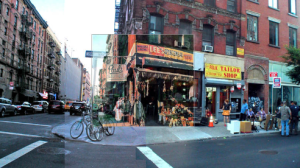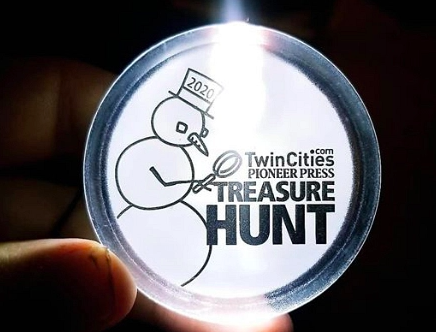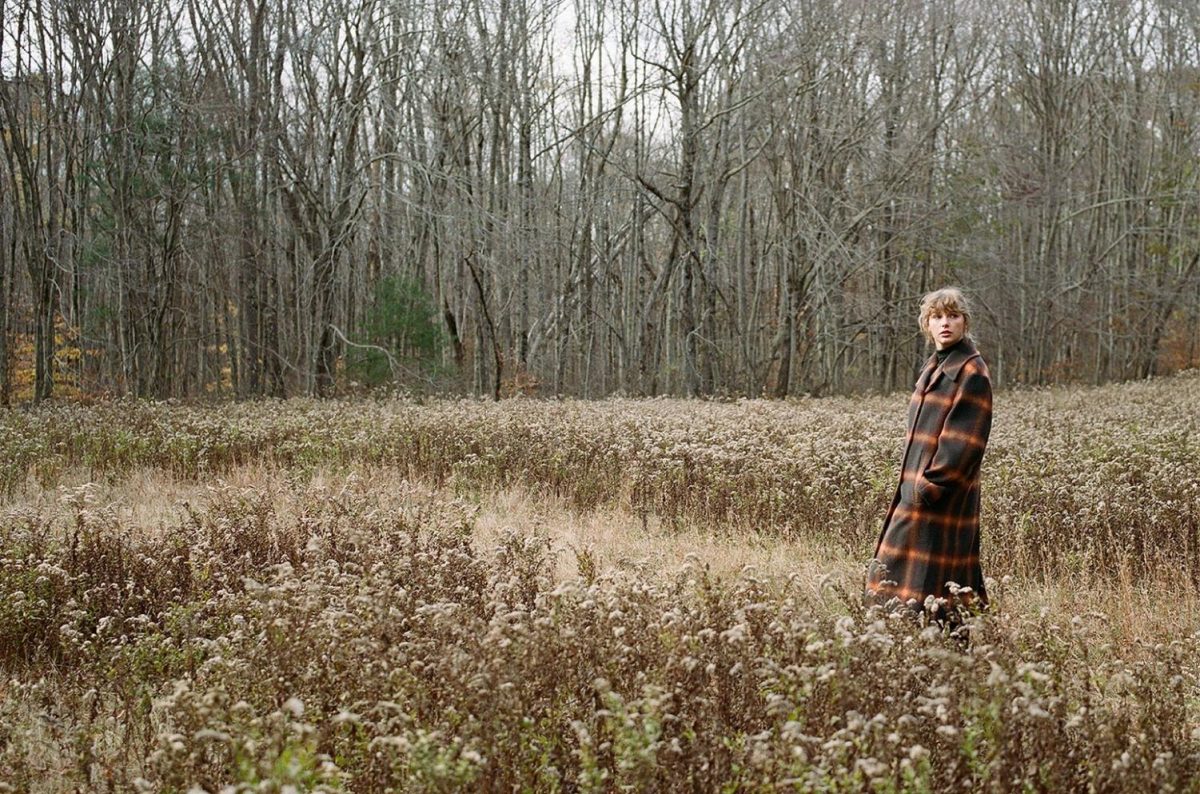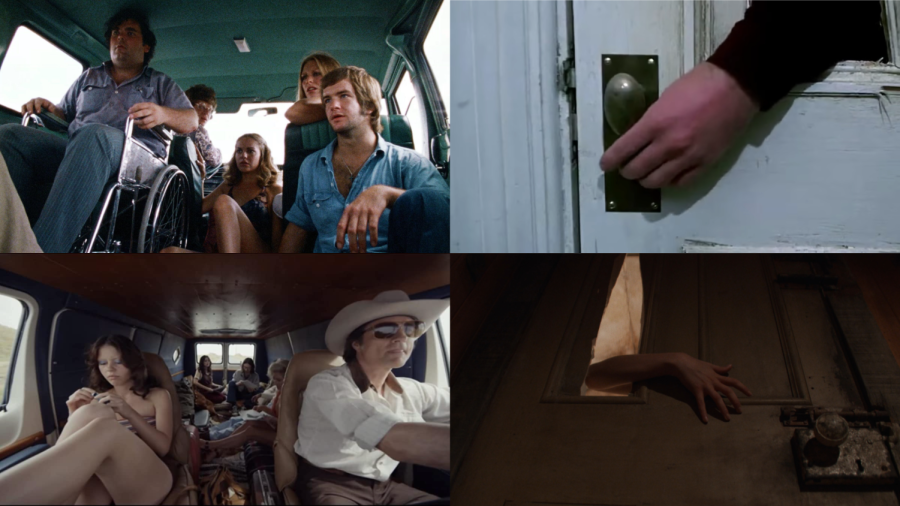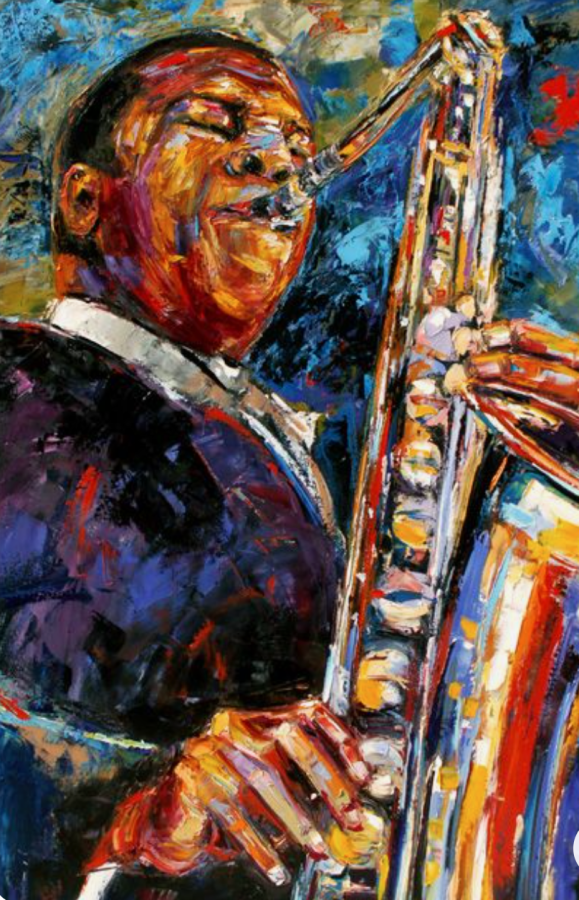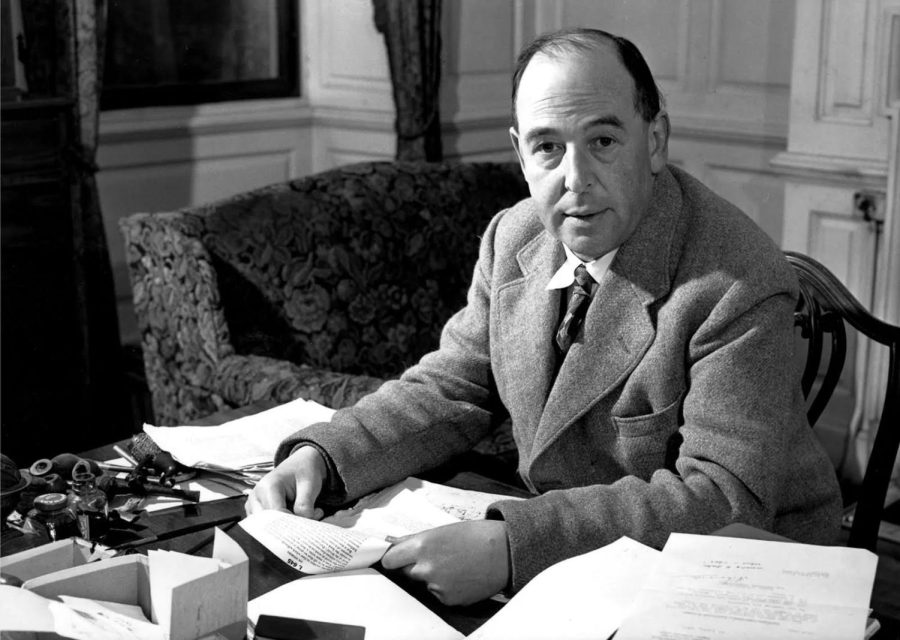Anyone can appreciate a good treasure hunt. The cryptic clues, the thrill of the search, and the prospect of a prize are alluring to all ages – both the young and the young at heart. If you’ve been looking to test your treasure hunting, clue-deciphering skills, look no further than the Saint Paul Winter Carnival.
For the past 70 years, a staple of the carnival has been the annual Pioneer Press Treasure Hunt, also known as the Hunt for the Medallion. Starting in late January, slightly before the official start of the festival, the St. Paul Pioneer Press (newspaper) prints daily clues, also releasing them on their website at midnight. Each clue points to the whereabouts of a medallion, a small disk (about 2 inches in diameter) with a design on it relating to Saint Paul. The medallion is hidden somewhere in Ramsey County (specific rules for where it’s hidden will be explained later in the article and can be read about on the Pioneer Press website, twincities.com). During the hunt, clues are released each day for up to twelve consecutive days, or until the medallion is found. The twelfth day’s clue reveals almost the exact spot where the medallion is hidden. By this time, the hunt has morphed into a race as people scramble to get to the medallion first and claim it. Once one person has uncovered the medallion, the hunt ends and the winner is awarded.
So why do people care about finding this minuscule metal token? A treasure hunt wouldn’t be a treasure hunt without a prize. Whoever finds the medallion receives an initial cash prize of $2,500, and anyone is eligible to win this money – you just have to locate the treasure first. If the winner of the hunt can provide all of the published daily clues from the Pioneer Press (clipped, copied, or printed) along with the medallion, they receive another $2,500. Finally, in order to qualify for an additional $5,000 in prize money, the individual who finds the medallion has to have bought an official Commemorative Pioneer Press Treasure Hunt Medallion for the current year (these are sold for $10 on twincities.com/treasurehunt). In short, this hidden metal token is worth up to $10,000 if you can find it.
Now, wait a moment, don’t take off searching just yet! The idea of winning thousands of dollars is exciting, but there’s a reason that the prize for finding the medallion is so great – the medallion is NOT easy to find. Almost every year, the medallion has been hidden in one of several area parks around the county, and it’s often found under, within, or attached to something, disguised as a piece of trash or part of the landscape. In past years, the medallion has been “wrapped in white tape and frozen inside a chunk of ice” (2015), “taped to the underside of a tortilla-chip can liner” (2002), and, my personal favorite, “inside a green donut” (2004). One of the later clues from 2004 made it clear that the donut, which had been sitting on the ground for a week, should not be eaten.
Not only is the medallion concealed to a ridiculous extent, but, as mentioned before, it is very small, and Ramsey County is very large. Before you can worry about trying to spot possible camouflaged medallions, you must learn how to decode the frustratingly vague clues published in the Pioneer Press so you can figure out the general location of the token. Riddles from past years can be found on the Pioneer Press website, the Treasure Hunt Headquarters website, and the LocalWiki page for the Twin Cities.
In 2004, the medallion was hidden inside of a green donut in Phalen Park. Below is one of the clues published in 2004 and an explanation of what it’s supposed to mean. This sample clue is one of the earlier ones given, so it’s meant to be more difficult than some of the clues published later on. Both the clue and the explanation were taken from the Winter Carnival archives, found on Treasure Hunt Headquarters (http://www.wintercarnival.mysite.com/2004page.pdf).
Clue 4
“East Side, West Side, take your honey for a ride
To a stony and sandy place
Come one, come all, ever following the bouncing ball
To the swift belongs the race.”
Explanation
“Stony and sandy place refers to all the Depression-era stonework and the beach on Phalen Lake and the sand traps at Phalen’s golf course. The medallion is on the West Side of Phalen Lake, and the park is in St. Paul’s East Side. Bouncing ball refers to the nearby green handball courts, and ride to the road and bike paths by the lake.”
As shown in the example clue and explanation, hints given in the Pioneer Press can be vague and hard to follow. Don’t lose hope yet, though! The clues will be easier to unravel if you have some sense of where the medallion might be. Fortunately, several of the rules for the Treasure Hunt narrow down the possibilities of where the medallion can be hidden. First, the medallion will not be hidden anywhere that isn’t public land, so don’t go snooping around your elderly neighbor, Edna’s lawn searching for the prize. Second, the medallion will not be hidden on State Capitol grounds, at Como Zoo & Conservatory, Rice Park, or Mounds Park Indian Mounds. If you were dying to visit any of those places on your hunt, you still can – you just won’t win anything by looking there. Third, the medallion will not be hidden under any skating surface, or on a golf course, so don’t upset the poor skaters and golfers by digging holes there. Finally, the medallion will not be hidden under or on any artificial turf surface, or at any construction site. You should not, and will not have to destroy anything to find the medallion.
If you’re not going to be terrorizing ice skaters and trespassing onto construction sites, how should you search for the medallion? To start, it’s important that you dress warmly because you’ll likely be out in the cold weather for long periods of time (if it wasn’t already implied, the medallion is hidden outside); jackets, hats, and gloves/mittens are the keys to successful – and enjoyable – searching. You will also benefit from bringing tools such as shovels, rakes, hoes, scrapers, etc. since you’ll probably have to dig through snow or ice to find the medallion. And BRING THE CLUES! You’ll need them anyway to glance back at while you’re searching, and it’s smart to print them off the website or cut them out of the newspaper in case you happen to find the token – remember, you’ll win another $2,500 if you can present copies of the published clues along with the medallion.
Above all, reinforcements are highly recommended, so don’t search alone! You can, of course, but it won’t be as fun as hunting with your friends or family members. Assemble a search party, and if you don’t end up finding anything, you can all grab lunch or warm up with some hot cocoa to end the day on a good note.
Obviously, the large-scale medallion hunt is not for everyone. Those who would rather not spend their Saturdays digging through the snow in city parks can still find other ways to participate in the fun. The Vis Medallion Hunt, especially, is a great opportunity to test your treasure hunting talent on a smaller scale that offers a greater chance of winning something. Avid treasure hunters might also consider designing their own medallion hunt and writing original clues for others to figure out. Whichever way you choose, no matter if you win or lose, you’ll get to be a part of a timeless Twin Cities tradition, and that’s the real prize.
So what are you sitting around, reading this for? Good luck, and happy hunting!
Sources
- twincities.com/treasurehunt
- https://www.twincities.com/2021/12/29/2022-pioneer-press-treasure-hunt-rules/
- https://www.twincities.com/2016/01/21/treasure-hunt-dos-and-donts/
- https://www.twincities.com/2019/01/17/past-treasure-hunt-medallion-locations/
- https://www.twincities.com/2021/12/27/commemorative-pioneer-press-treasure-hunt-medallion-available-online-now/
- https://www.twincities.com/2016/02/05/pioneer-press-treasure-hunt-surprises-tips-and-insight/
- https://localwiki.org/twincities/The_St._Paul_Winter_Carnival_Medallion_Hunt
- http://www.wintercarnival.mysite.com/
- http://www.wintercarnival.mysite.com/2004page.pdf




